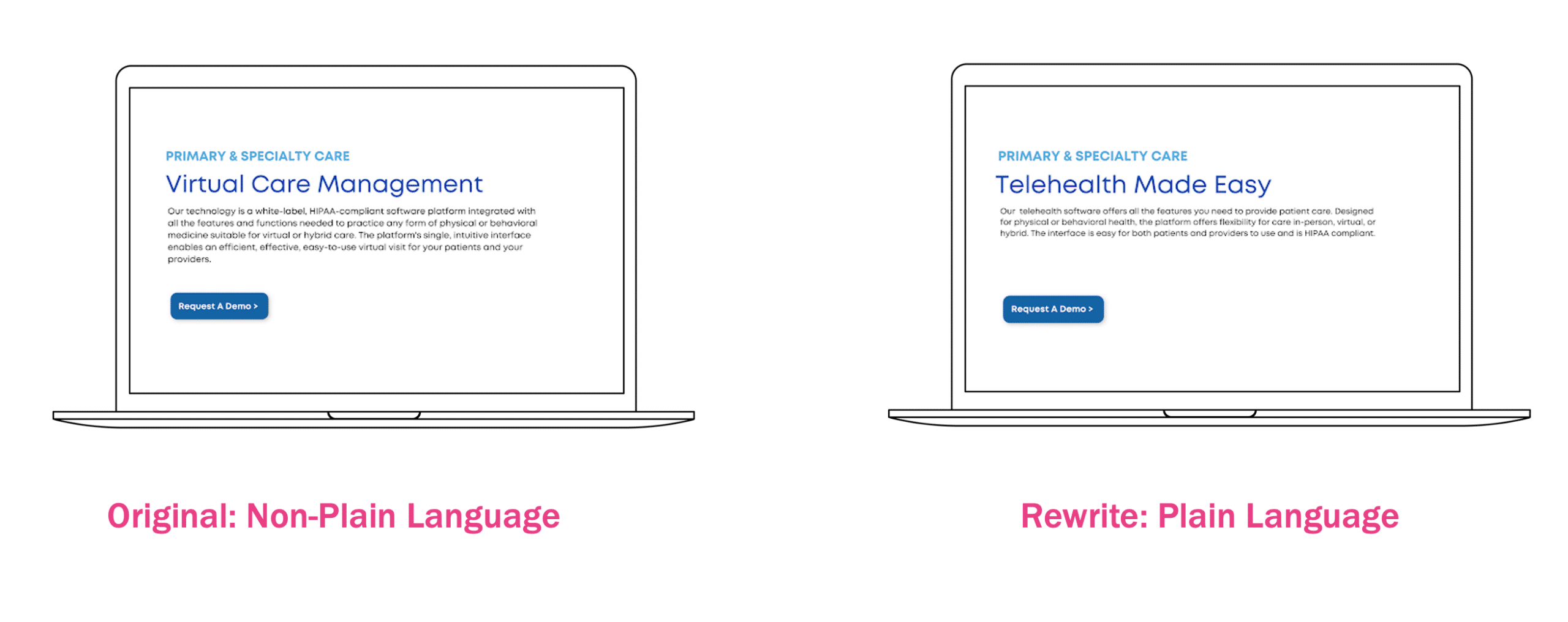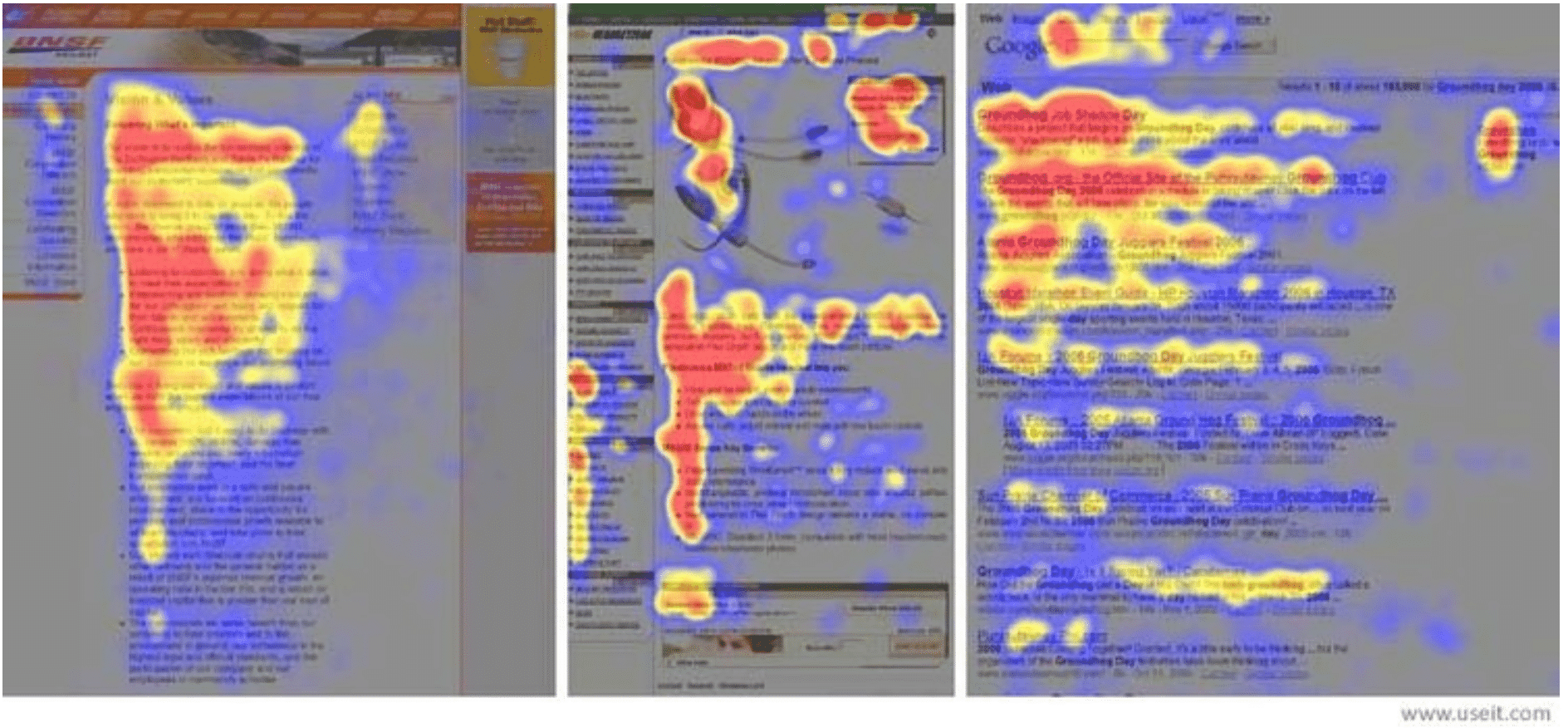Summary
- Use bulleted lists, short sentences, and bold text to create content that’s easy to skim and suitable for healthcare professionals and mobile readers.
- Prioritize plain language and active voice to ensure clarity and accessibility, especially for patient-facing materials.
- Focus on the reader’s needs and use headings and hooks to make the content actionable and relevant.
You know what plain writing is
You know why using plain language and everyday words matter in medical communication, where words can make the difference between life and death. Now it’s time to focus on the how:
How can you use plain language in healthcare writing?
In 2023, we ran a healthcare marketing study to find out how plain language impacts B2B buying teams. We discovered exactly what healthcare professionals dislike about technical language — and the elements of plain English language that work.
Learn the top 10 principles of plain language writing for healthcare communication pulled straight from the results of our survey:
1. Use bulleted lists
Bulleted lists are like a little vacation in the middle of your writing. The formatting of a bulleted list:
- Gives readers’ brains a break
- Primes readers to take in information faster
- Makes points more memorable (See what we did there?)
“Bullet points to the rescue! This option is so easy to skim and digest important information.”
– Survey respondent (2023)
2. Remove jargon
Some jargon is OK. In shared communities of practice where healthcare professionals have common definitions for terms, using those terms is beneficial. It develops trust between reader and writer, making readers feel like the writer is “one of them.”
But in patient-facing health communication, it’s best to avoid jargon altogether. Patients have varying levels of familiarity with medical terms. Use plain language alternatives for commonly used medical terms to improve health literacy.
And even when you are marketing to healthcare professionals, it’s still beneficial to remove jargon. Physicians often share marketing materials with nonclinical staff, so it’s important to make your content accessible to everyone.
“Jargon is good when everyone in the conversation is using the same definitions for the words. But the reality is that we each have our own subsets of jargon that we use.”
– Survey respondent (2023)
3. Use the active voice
Which sentence is easier to read?
- “Passive voice should be avoided by writers.”
- “Writers should avoid using passive voice.”
Sentence 2 is written in active voice and is easier to understand quickly. In active voice, the subject performs the action (while in passive voice, the subject receives the action). This sentence structure makes writing clearer and more concise.
Use Grammarly’s passive voice checker to catch instances of passive voice in your plain language writing.
4. Make it about your reader
Reader-centric content draws in readers, gives them a reason to keep reading and makes them feel understood. It boosts your chances of conversion. And if that isn’t enough, putting your reader first is an element of Helpful Content — improving your chances of ranking.
To write reader-centric content, you need to know:
- Who you’re targeting (that’s right, pull out your healthcare customer personas !)
- The problems they’re facing (look through your customer interview data)
- What they want or need
“[I preferred this example because] it’s more from the consumer’s point of view. Less jargon.”
– Survey respondent (2023)
5. Keep it concise
Writing succinctly is an important principle of plain language and clear communication. Too much information muddies a message and derails a reader’s train — killing conversions. Keep the train on its tracks with clear, short sentences and paragraphs, especially when communicating health information.
Creating concise writing is challenging. It’s not how most of us write (or speak, for that matter). Here’s our advice:
Don’t change the way you write. Let the words (and long sentences) flow naturally. But when you go back to edit, use your red pen ruthlessly and cut out what you don’t need.
“This one was short, quick, and to the point. I didn’t have to think much to figure out what it was. [There weren’t too many words], and the title was easy to understand with a quick glance.”
– Survey respondent (2023)
6. Write benefit-focused headings
You’ve likely heard it before — “features tell, benefits sell.” Benefits are enticing. They drive conversion by telling readers why they should care. According to feedback from our survey, benefits are also actionable and easier to understand.
Compare the two excerpts below. Most survey respondents preferred Option B. Some pointed to the clear, benefits-oriented heading as a reason behind their preference.
“[I like that the] headline is more specific and conveys a benefit: easy.”
– Survey respondent (2023)
7. Draw readers in
StoryBrand’s Grunt Test states that your website has fewer than 7 seconds to give readers the information they want before they bounce. If the first heading, section, and sentence aren’t clear to readers, you’ll lose them. This is true for more than website content.
Writing a good hook is a little-known principle of plain language, but it makes sense. You’re sure to turn off readers if the first sentence is confusing. Make sure the beginning of your piece is reader-centric and easy to understand.
“With the first version, I lost interest in reading further after the first sentence or two … I had to force myself to continue. The second … was easy to read, and I could understand what was being said.”
– Survey respondent (2023)
8. Emphasize the important points
Have you noticed our use of bolding in this article? We bolded important information so that anyone skimming the headings and bolded sentences could get the gist of this blog in seconds — not minutes. Using intentional bolding is another way to write in plain language.
Research has shown that most readers scan text in an F-shaped pattern, like in the picture below. This means they read more information at the beginning of the content and often skip writing toward the end.
Accommodate for skimmers by front-loading the important information and bolding your can’t-miss points.
“Often readers reading online will skim through paragraphs unless [they’re] bolded or [use] bullet points.”
– Survey respondent (2023)
9. Use words that encourage action
Plain language in healthcare communication is actionable writing. It makes the next step seem quick, easy and worthwhile for patients and readers.
Readers who are confused about the next step won’t take it. Make your call to action clear and reduce risk to encourage your audience to act:
- “Book an appointment”
- “Download the report”
10. Optimize for mobile readers
Over 55% of website traffic comes from mobile devices. Write your content knowing that more than half of your readers are using a smartphone.
Sounds good in theory, but what does that mean in practice? Create content like you’re always writing for social media — use short paragraphs, concise headings, and helpful visuals . Read more ways you can optimize for mobile.
“It’s easy to read, concise, and shorter, which makes it easier for someone to read on mobile devices.”
– Survey respondent (2023)
Get the data to support plain language
Want to make a business case for using plain language in your organization? Download the plain language summary report to see the benefits of clarity in healthcare marketing.




